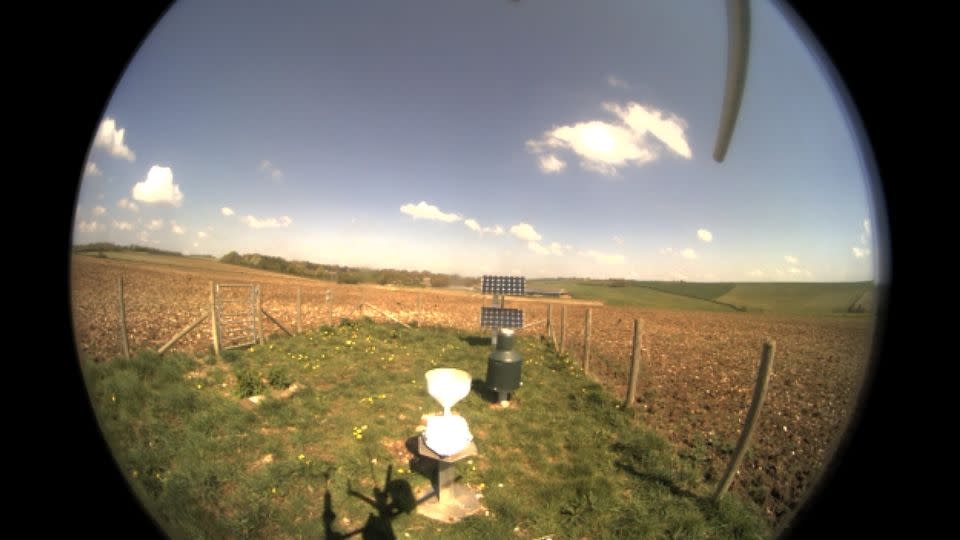How cosmic radiation is helping to monitor floods and drought
It may not be the most glamorous topic, but soil moisture is essential for sustaining human life. It’s what allows us to grow crops, and without it, we wouldn’t have the grasslands that feed cattle and sheep.
A better understanding of soil moisture can help us use less water for irrigation and ensure that soils are more drought resilient — both of which are becoming more important as the impacts of climate change are felt around the world.
That’s why a technique that harnesses cosmic rays could prove to be invaluable.
Although it’s a relatively new method, it’s being explored by scientists around the world. Based in England, Cosmos-UK was set up in 2013, operated by the UK Centre for Ecology and Hydrology, with funding from the Natural Environment Research Council.
“We make use of naturally occurring cosmic radiation, which can come from far in outer space,” explains Dr. Jonathan Evans, project leader for Cosmos-UK.
This cosmic radiation interacts with the Earth’s atmosphere to generate particles called neutrons, explains Evans. “The neutrons are really effectively scattered by the water in the soil, so we can count the number of neutrons to work out how much water there is in the soil.”
Soil moisture can be measured in other ways — for example using sensors in the ground — but these can only analyze a small volume of soil, with the potential for large variations in readings between sensors, says Evans. Satellites cover much larger areas but can be affected by things like crop growth and may only give a reading every week or so, when the satellites pass over a particular area.
The cosmic radiation neutron sensing technique can measure soil moisture over a 200-meter radius, and in real-time, says Evans.
“This data is really important for water resource managers, such as water companies and the Environment Agency, so that we can monitor both flood and drought risk,” says Evans.
“It also provides information to farmers on current growing conditions, and … for management of farm activities.”

In 2016, Cosmos-UK expanded to India, where agriculture is heavily dependent on irrigation. Improved data on soil moisture could help farmers better manage their irrigation, making their water resources more sustainable, argues Evans. He adds that the research, carried out in collaboration with three Indian universities, has increased understanding of how the level of soil moisture can affect rainfall.
For a decade, the UN’s joint FAO/IAEA Division of Nuclear Techniques in Food and Agriculture has also been working with cosmic ray neutron sensors, which it describes as a “valuable tool for climate-smart agriculture.”
The organization has trained hundreds of scientists around the world to use the technology, with researchers in countries including Sudan and Iraq saying it has helped them manage limited water resources.
Back in the UK, Evans says that the data collected by Cosmos-UK has revealed that drought frequency has increased slightly since the project began, which is linked to changing rainfall patterns.
“Although we have a really good 10-year data set, it’s still actually a bit too short for statistical climate analysis,” he says. “But we can use those data in our climate models and land surface models to predict the soil moisture under future climate [which] enables us to predict the effects of climate change.”
This story has been updated to correct the name of the Natural Environment Research Council.
For more CNN news and newsletters create an account at CNN.com

 Yahoo News
Yahoo News 
